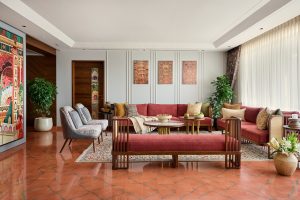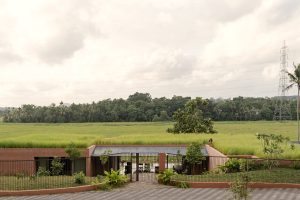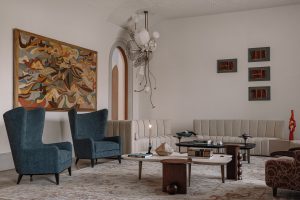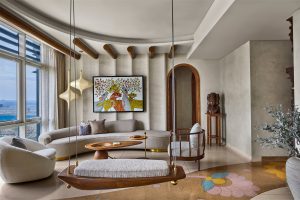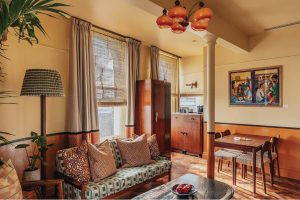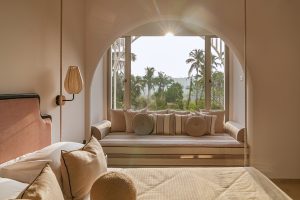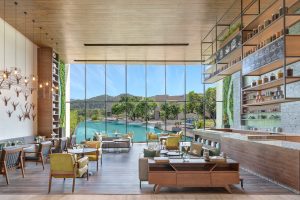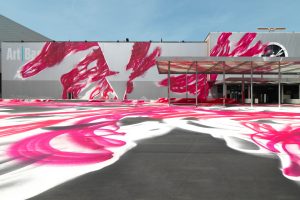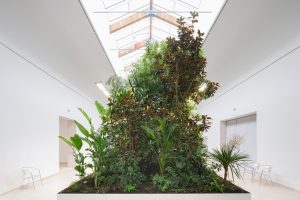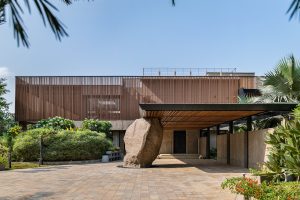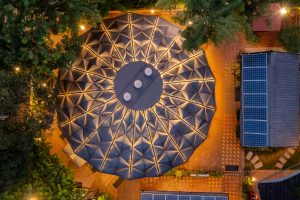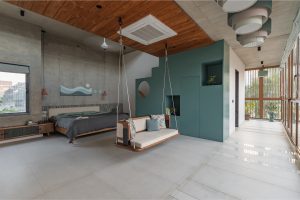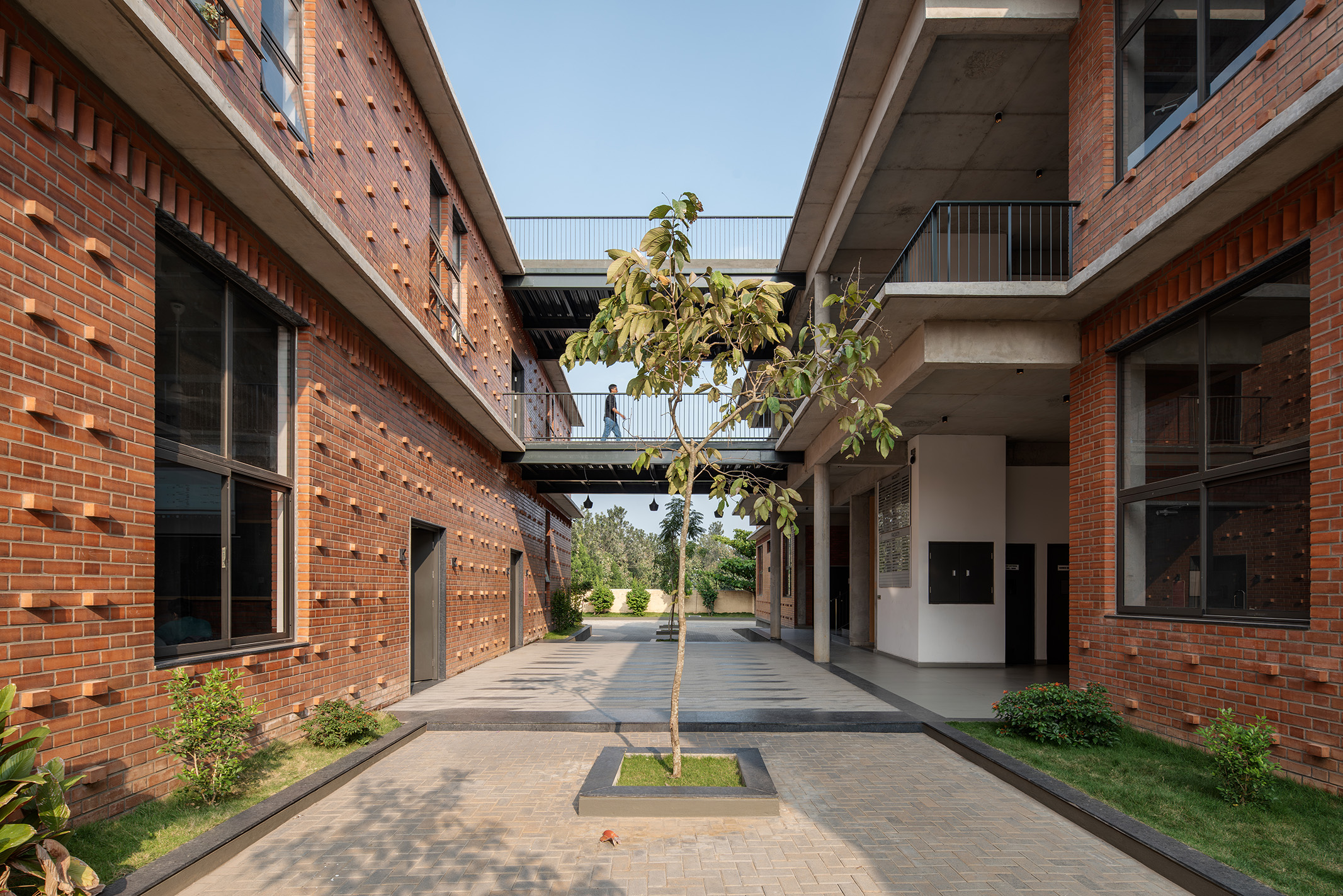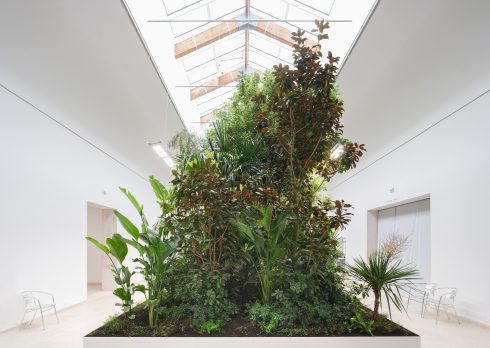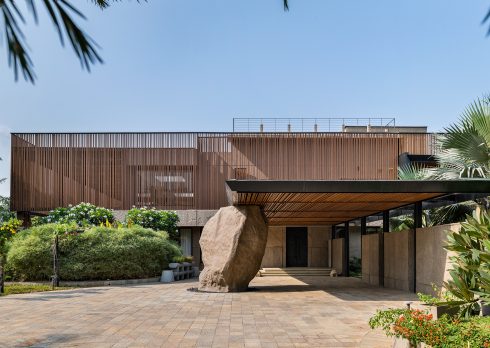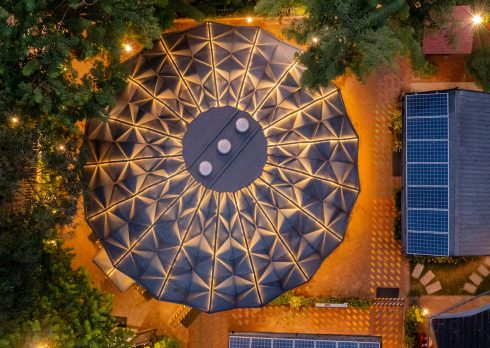This New Complex Of The National School Of Business In Bengaluru Features Biophilic Elements And Climate-Responsive Architecture
- 4 Mar '24
- 5:53 pm by Pallavi Mehra
At first glance, this earthy complex appears to be a visually arresting mansion or a museum. Situated on the outskirts of Bengaluru, the National School of Business (NSB) is a higher education institution offering both graduate and post-graduate courses in business management. In response to their rapid growth, the institution desired a new centre of academia adjacent to its existing campus. NSB reached out to Aditya Venkat, Principal Architect of HabitArt Architecture Studio to conceptualise this new block. They envisioned it to be a landmark that would refresh the institution’s identity and exemplify its community-centric ethos, all while fulfilling the heavy program-oriented requirements. NSB’s primary campus features a unique biophilic design, which the university wanted for this new block as well.
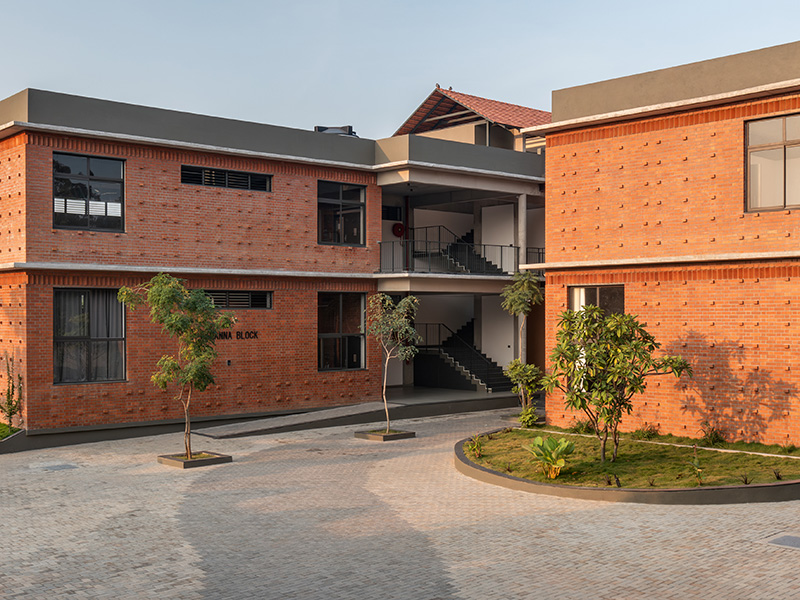
“The nature of the project posed several key challenges. The first challenge was tight deadlines: To have a functional setup as soon as possible with the overall project timeline being one academic year. The second challenge was working with restricted buildable area from the site’s location: proximity to a railway line,” explains Aditya Venkat, Principal Architect of HabitArt Architecture Studio.
Also read: A Unique Biophilic Home In The Outskirts Of Kochi Brings Nature Inside
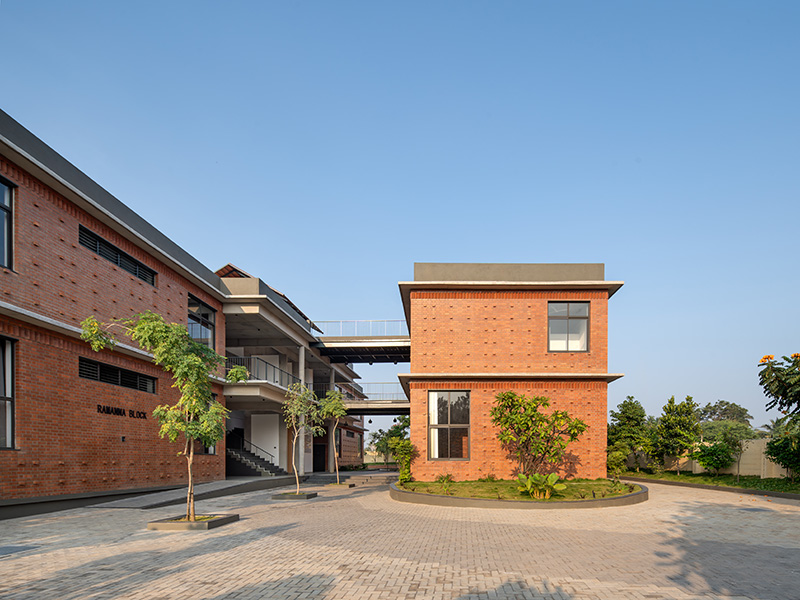
These constraints necessitated a creative take on the layout to satisfy university-specific requirements while adhering to local by-laws. The restrictions proved to be a major factor that favoured spatial planning development. The idea generated was straightforward—two independent blocks with a central longitudinal green spine connecting the blocks via bridges offering panoramic views of the surrounding natural landscape.
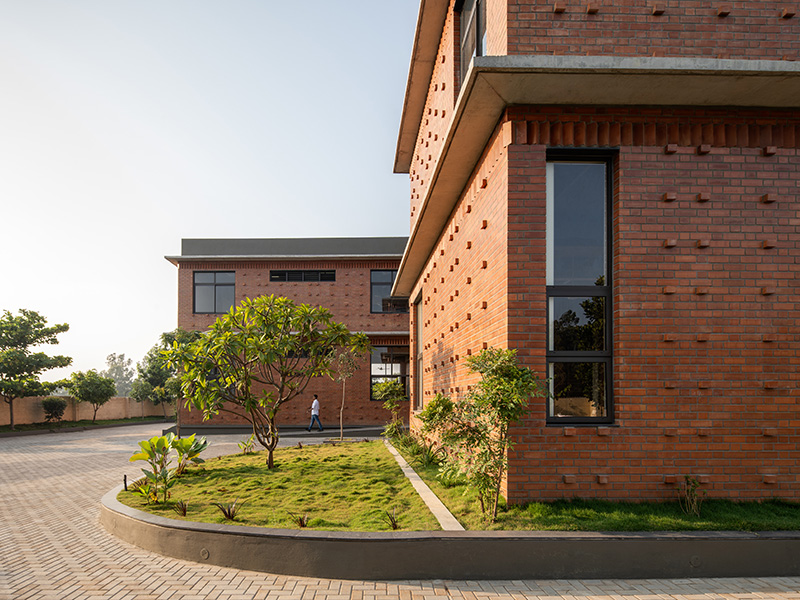
Biophilic Elements
As you enter the new NSB complex, the well-landscaped central spine grabs your attention. The transition from unbuilt to the built via the courtyard and central plaza is a visually pleasing and soothing experience. The ground floor of the academic block consists of theatrical-styled classrooms while the upper floor consists of classes with flexible layouts.
In the faculty block, the administration facilities and the board of director cabins are located. The first floor in this block consists of 40 faculty staff rooms, well-lit and ventilated with access to a pantry and toilets. The bridge on the first floor connects the academic and faculty block. This semi-open space provides unobstructed views of the neighbouring greenery as one walks from one block to another. Overall, the architecture of the building complex blurs the boundaries of the indoors and outdoors.
Also read: This Inviting 5,500 Sq. Ft. Hyderabad Apartment Makes A Case For Natural Materials And Neutral Hues
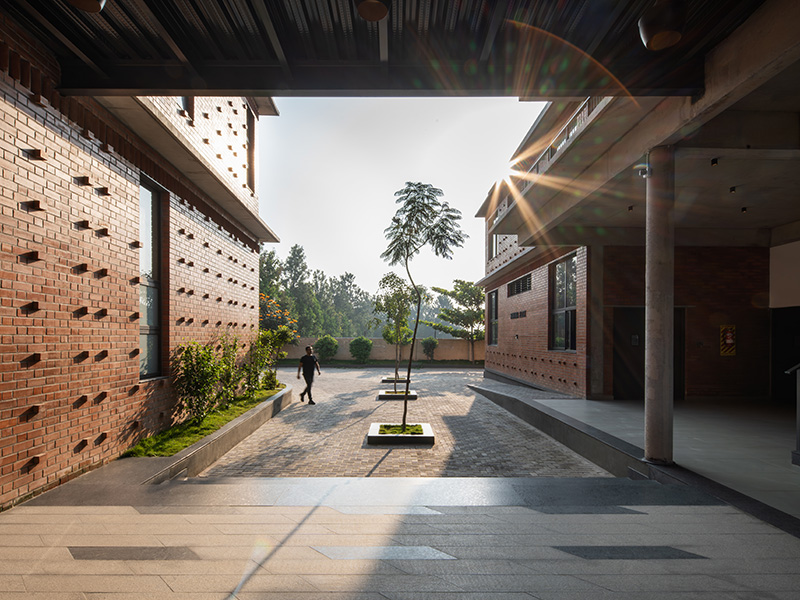
The tranquil courtyard of this new complex invites nature in. “The central spine is the highlight of this project and incorporating a series of trees and flamed stone pavers has given it a unique character. This well-manicured space binds the architectural mass cohesively,” adds architect Aditya Venkat.
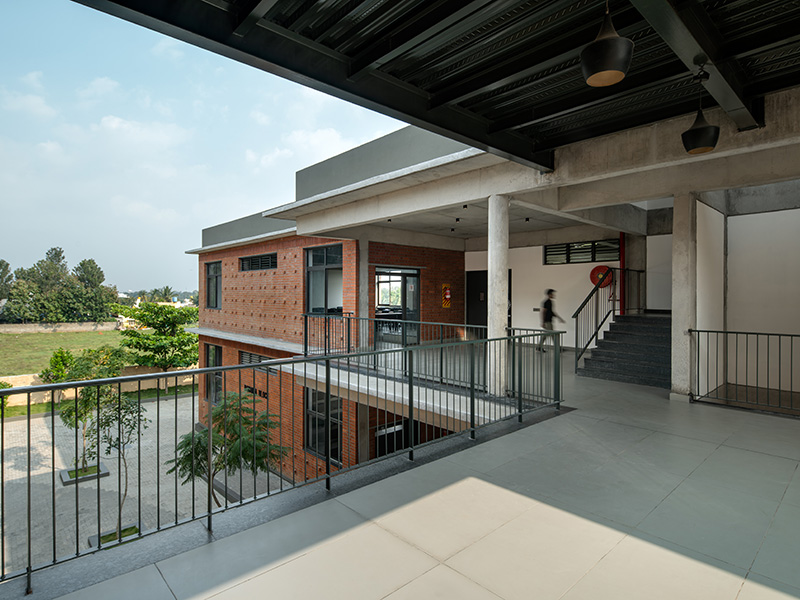
Raw Natural Materiality
The built form is unapologetically explicit in expressing its materiality. The raw concrete framed structure is wrapped by the brick wall with slight projections to create depth in the elevation. Exposed brick finishes are balanced out with exposed concrete surfaces and grey metal surfaces. The Kota floor tile is subdued in a grey-green theme to blend in with the finishes.
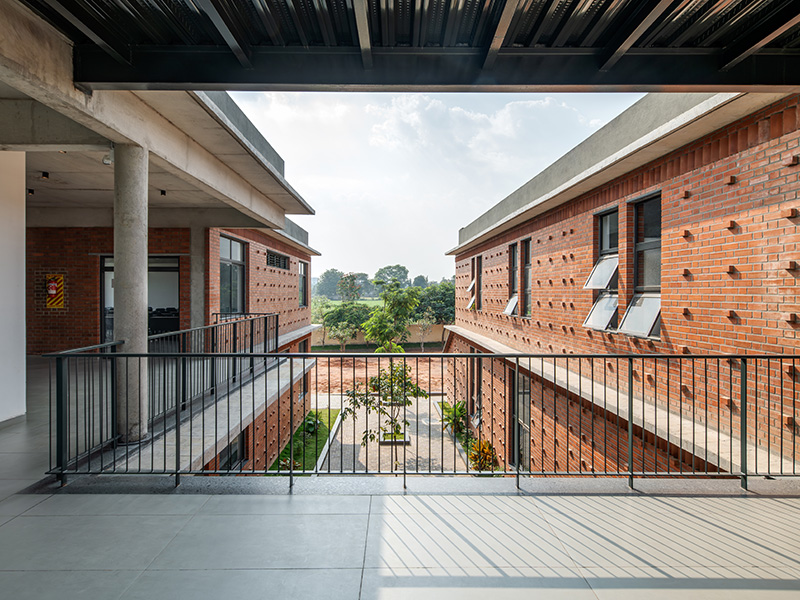
The structure’s facade is made of bricks that assimilate into the encompassing natural landscape. “This is an architectural style that breaks away from a typical institutional module block. There are no corridors or semi-covered verandahs. Instead, the entire built form opens itself to its surroundings and is accessible from any point along the spine,” remarks architect Aditya Venkat.
Also read: The Smritivan Earthquake Museum Introduces A New Kind Of Inclusive Memorial In North Gujarat
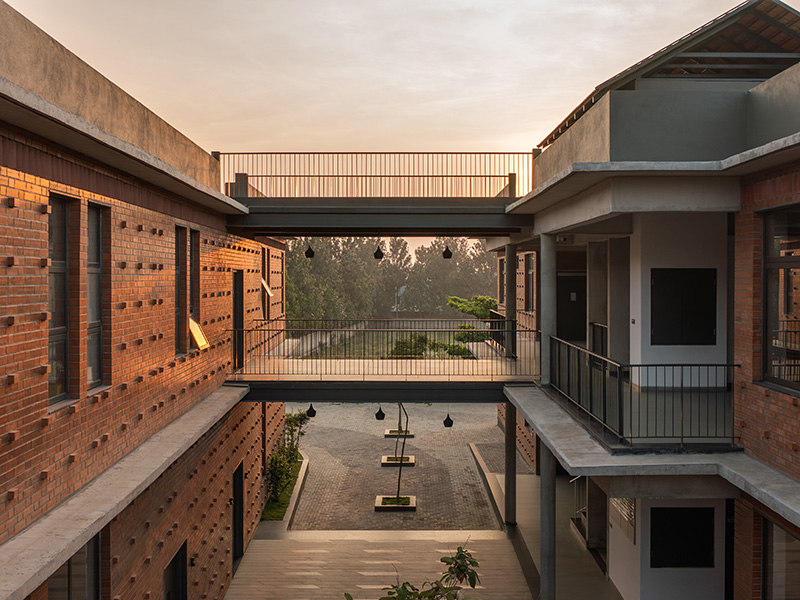
Climate-responsive Architecture
This new building’s surfaces and brick walls are designed with an approach towards climate-responsive architecture, with strategic fenestrations along the horizontal massing. These vertical fenestrations bring in adequate indirect lighting and cross ventilation, yet avoid light glare in the spaces inside. Moreover, the landscaped central space is always cool at any given point of time due to shadows cast by either block at various times during the day. Trees have also been planted along the spine, with the vision to use them as larger canopy covers. The building’s design also enables rainwater harvesting. The entire roof surface runoff drains into a rainwater tank placed behind the building. The roof has been designed to accommodate solar electricity generation up to 400 KWP which will be installed in phases to run the entire campus.

